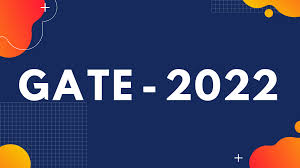India stands on the cusp of a demographic shift that presents both challenges and opportunities. According to the World Economic Forum (WEF), by 2025, over 50% of employees worldwide will require reskilling to stay relevant in the job market. For India, where over 65% of the population is under the age of 35, this urgency is heightened. This youthful demographic presents a significant advantage but also places immense pressure on the education system to ensure that this emerging workforce is adequately skilled.
The India Skills Report 2023 paints a stark picture: only 48.7% of Indian graduates are considered employable, a slight improvement from 46.2% in 2022. These statistics underscore the pressing need for an education system that goes beyond theoretical knowledge to focus on practical, industry-aligned skills. As technological advancements and global economic shifts reshape the job market, the demand for industry-ready graduates is more critical than ever. The Indian government’s commitment to skill development reflects a strategic effort to bridge the gap between education and employment, ensuring that the nation’s youth are both educated and employable.
Government Initiatives to Boost Skill Development
Recognizing the crucial role of skill development in national progress, the Union Budget 2024-25 outlines a comprehensive strategy to achieve ‘Viksit Bharat,’ or a developed India, with skill development and employment as key priorities. The budget focuses on equipping India’s young workforce with industry-relevant skills to enhance innovation and productivity.
Among the initiatives is a new scheme to skill 20 lakh youth over the next five years and upgrade 1,000 Industrial Training Institutes (ITIs). The revised Model Skill Loan Scheme is set to provide loans of up to ₹7.5 lakh, benefiting 25,000 students annually, along with additional support for higher education loans up to ₹10 lakh. Existing programs such as the Pradhan Mantri Kaushal Vikas Yojana (PMKVY) and the National Policy on Skill Development & Entrepreneurship (NPSDE) continue to emphasize vocational training, apprenticeships, and entrepreneurship.
The PMKVY, a flagship program aiming to skill 10 million youth by 2025, offers industry-relevant training to prepare candidates for specific job roles. By June 2024, the program had trained over 8.5 million individuals, achieving a placement rate of 55%. Similarly, the Skill India Mission, launched in 2015, aims to train over 400 million people by 2025, establishing numerous skill development centers across the country in sectors like information technology, healthcare, and manufacturing.
Encouraging Public-Private Partnerships in Skilling
The success of India’s skill development efforts also hinges on effective collaboration between the government and private sector. Public-private partnerships (PPP) have emerged as a powerful tool in enhancing the reach and effectiveness of these initiatives. Tata Consultancy Services (TCS), for example, has partnered with over 1,500 educational institutions to provide vocational training in digital literacy and soft skills.
The National Skill Development Corporation (NSDC) has also collaborated with industry giants like Samsung and IBM to launch specialized training programs in high-demand fields such as artificial intelligence (AI) and machine learning (ML). Tata STRIVE, a notable initiative under this collaborative model, has trained over 500,000 youth in various vocational skills, boasting an employment rate of over 70% for its graduates within six months of completing their training.
Role of Higher Education Institutions in Skill Development
Higher education institutions across India are increasingly integrating skill development into their curricula to better align education with industry needs. Prestigious institutions like the Indian Institutes of Technology (IITs) and the Indian Institutes of Management (IIMs) have introduced courses focused on entrepreneurship, digital skills, and industry-specific training.
Moreover, the All India Council for Technical Education (AICTE) has mandated internships for engineering students to ensure they gain practical, hands-on experience before entering the job market. In Tamil Nadu, for instance, Anna University has partnered with Siemens to establish the Siemens Center of Excellence, which provides training in advanced manufacturing and automation technologies. This collaboration has led to an 85% increase in the employability of university graduates, highlighting the positive impact of industry-academic partnerships.
Digital Learning Platforms: Democratizing Access to Skills
The rise of digital learning platforms has further democratized access to skill development in India. Online platforms such as Coursera, UpGrad, and Byju’s have enabled students across the country to access high-quality education and training in a wide range of fields. In 2023 alone, Coursera reported a 40% increase in enrollments from India, with popular courses including data science, business analytics, and AI.
Additionally, the National Digital Literacy Mission (NDLM), launched in 2021, aims to make at least one person in every Indian household digitally literate by 2026. The mission has already reached over 20 million individuals, equipping them with essential digital skills needed to thrive in today’s economy.
Challenges in India’s Skill Development Landscape
Despite significant progress, India’s skill development ecosystem faces several challenges. The education sector continues to grapple with issues such as outdated curricula, inadequate infrastructure, and a shortage of trained faculty. Furthermore, there is a noticeable disparity in access to skill development programs between urban and rural areas, which continues to widen the gap in opportunities.
Addressing these challenges requires continuous collaboration among the government, industry, and educational institutions. A more agile education system, capable of quickly adapting to the evolving demands of the job market, is crucial. Expanding the reach of skill development programs to rural and remote areas is also vital to ensure that every young Indian has the opportunity to succeed in the 21st-century job market.
The Road Ahead: A Skilled Workforce for a Global Economy
India’s journey toward bridging the gap between education and employment is well underway. With a continued focus on skill development, supported by government initiatives and industry collaboration, India is poised to transform its vast young population into a highly skilled and employable workforce. This transformation is expected to drive economic growth and contribute to the nation’s vision of becoming a global leader in innovation and technology.
In conclusion, the future of India’s workforce lies in its ability to adapt, learn, and evolve. Skill development is the key to unlocking this potential, ensuring that India not only benefits from its demographic dividend but also leads the world in creating innovative solutions for a rapidly changing global economy.





